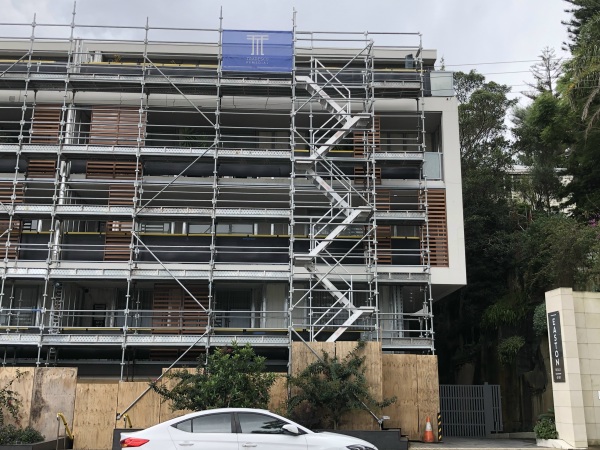
The gleaming white, orange and red panels attached to the outside of many high rise buildings built between the 1980s and 2013 create a stylish look for a relatively little money.
But these panels hide a dark secret - they are highly combustible because they have a polyethylene core, which is like diesel fuel sandwiched between two paper thin sheets of aluminium.
Not long after midnight on 25 November 2014, the inevitable happened at Lacrosse apartments in Melbourne's Docklands. A fire which started on the balcony of apartment 805 took just 11 minutes to climb up the building, as the panels burst into flame. See photo.
On 28 February 2019, Judge Woodward handed down his decision on who must pay for the fire damage and for the cost of replacing all the panels at Lacrosse. He ordered:
- The builder, LU Simon to pay the owners corporation and the 209 strata owners $5.748 million to reinstate the damage caused by the fire and for the additional insurance premiums on the building because of the panels / fire, and also up to $6.823 million for removal and reinstatement of the rest of the cladding.
- The building surveyor, Gardner Group to pay 33% of that amount to LU Simon
- The architect, Elenberg Fraser to pay 25% of that amount to LU Simon
- The fire engineer, Thomas Nicolas to pay 39% of that amount to LU Simon
- The French backpacker, whose cigarette started the fire, had the final 3% responsibility.
Not paying attention to the fire safety of building materials used in the building has proved to be a costly lesson for the builder, and the building consultants.
And having the misfortune of buying in the Lacrosse building has been costly for the owners. Apartment 805 (a 2 bedroom 2 bathroom apartment) was bought off the plan in May 2010 for $580,000. It was re-sold in January 2018 for just $445,000.
According to Fire Brigades, there are 10,000 buildings in the eastern states of Australia with suspected highly flammable cladding.
For more details, click on my case note -
